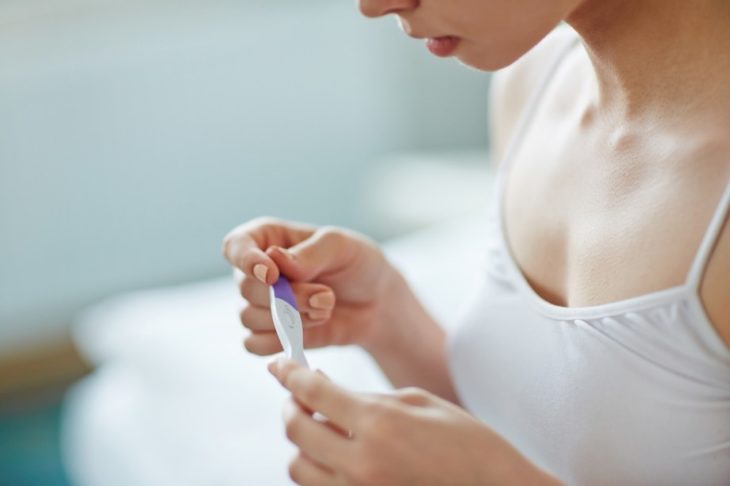
When you choose to become pregnant it can be an exciting, and sometimes scary endeavor. Like a well-choreographed dance you give up harmful vices, like alcohol, and opt for a cleaner, healthier lifestyle. You make note of your menstrual cycle, timing intercourse for that optimum period of ovulation. You may even attempt a post-sex handstand incorporating gravity in your quest to become pregnant. Whatever will help, right? (Spoiler alert: it doesn’t!)
But, month after month your period arrives, right on time. Your excitement begins to wane and worry takes over. You never assumed it would take this long. Well-meaning friends and loved ones advise you to “Just relax and it will happen”. You try not to stress, but still, each month, your period proves them wrong. The word “infertility” starts to creep into your conversations. Should you seek out an infertility specialist?
Pregnancy May Take A Little Longer Than You Thought
Before you become too disheartened, you need to take a look at some factors that may make your journey to pregnancy take a little longer than you expected:
-
- Women under 35 should wait until after 12 consecutive months before assuming their fertility is compromised, unless there are obvious problems like irregular cycles, known issues in the male partner or a history of multiple miscarriages.
-
- Women 35 or over need to attempt becoming pregnant for 6 consecutive months before considering they may be infertile, unless there are obvious issues as stated above.
- You aren’t ovulating when you believe you are. Not everyone ovulates when they assume. There are some ways you can find out when you’re ovulating
Of course, if you’re aware of all of these factors, and are still not able to become pregnant, you will need to talk to your physician, and perhaps, anticipate some fertility testing.
How to Determine Infertility
The easiest way to determine whether or not you indeed have a fertility issue is by scheduling a thorough check-up with your regular OB-GYN. Once your physician determines there’s cause for concern, you’ll need to begin seeing someone who specializes in reproductive endocrinology and infertility.
In today’s world there is much more known about infertility, and how to treat it, than ever before. There are options for those who are not able to become pregnant on their own, and wish to experience pregnancy, or have a biological child, that didn’t exist even a decade ago. Your fertility can be improved using invasive and non-invasive treatments.
Fertility Testing
In order to decide on the best approach to your correct infertility, it’s necessary to determine the reason you are not able to become pregnant. The first course of action will be blood work for the woman, in order to check hormone levels and ensure ovulation is supported. For a semen analysis the man will provide a specimen to be evaluated for sperm count, motility, and other conditions affecting male fertility.
Beyond the Initial Testing
If you have symptoms of, or have previously been diagnosed with endometriosis, uterine abnormalities, ovarian, or tubal scarring, you’ll need to have further testing.
-
- A hysteroscopy is a useful diagnostic tool used to take a look at your uterus. The hysteroscope is a thin device, inserted into your uterus through the vagina. This procedure allows your physician to examine the uterus for polyps, fibroids, scar tissue, and any abnormalities. If certain abnormalities are detected during your hysteroscopy, they can possibly be treated at that time. There is no pain as you are under sedation for this procedure.
-
- Laparoscopy is a procedure by which the abdominal area is evaluated. An incision is made into your bellybutton, and a laparoscope is inserted to examine the pelvic region. This allows your physician to assess your fallopian tubes, ovaries, and evidence of endometriosis. You will be under general anesthesia.
- Additionally, a laparoscopic procedure is useful for treating certain conditions. It is much less invasive than a laparotomy, or open abdominal surgery. Recovery is much quicker, and you are usually allowed to return home the same day.
Types of Treatment
There are many different ways to treat infertility. For those with ovulation disorders, fertility drugs may be enough to aid in conception. The first drug used, typically, is Clomid. In roughly 20-40% of couples with female factor infertility due to ovulation disorders, the use of Clomid is successful within six cycles of use.
There are other drugs which aid in inducing ovulation as well. Gonadotropins, for instance, mimic naturally-occurring hormones, in which you may be deficient. Certain drugs are given to treat conditions like PCOS, and other medical conditions which interfere with your ability to conceive.
In circumstances where the woman’s cervical mucus proves incompatible with the man’s sperm, male infertility, or for unexplained infertility, sperm can be placed directly into the uterus. This method of treatment is called IUI, or intrauterine insemination. Unfortunately, the success rate for IUI is relatively low.
By far, one of the most successful treatments for couples, or individuals who are not able to conceive, is IVF. In Vitro Fertilization begins with the woman being administered fertility drugs to stimulate ovulation. The mature eggs are retrieved in an outpatient procedure, and combined with sperm. Once fertilization has taken place, and depending on whether you choose to have the embryos tested for chromosomal abnormalities, viable embryos are placed into the woman’s uterus.
For couples who need outside assistance in order to grow their family, third party reproduction is always an option. Carefully screened sperm and egg donors are available, and surrogacy is also a valid option.










